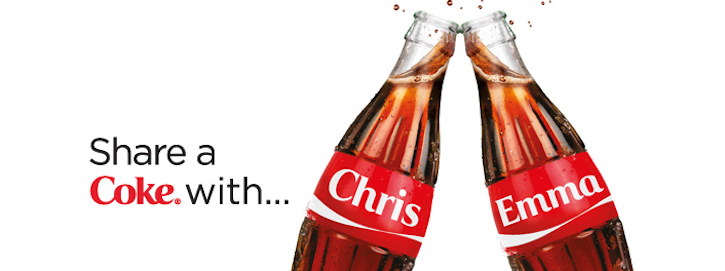
A changing marketing landscape
As technology and big data reshape marketing, the role of the CMO is evolving rapidly. Today’s CMOs are required to harness emerging, disruptive technologies while balancing operational realities – new challenges that many are unprepared for and even lack the requisite skills to approach. Leading educational institutions such as Harvard Business School have come under fire for not preparing students for this new era of burgeoning technology. Business students are now demanding that certain technology classes be made mandatory for MBA candidates so future leaders will be better prepared to cope with the changing landscape.
Automation is helping shape the new landscape
Marketing automation is at the forefront of this new era where marketing and big data overlap. Marketing automation refers to software that mechanizes a marketing campaign by sorting, grouping, analyzing, prioritizing and executing marketing tasks. It sounds simple, but depending on a company’s marketing needs and organizational complexities it may require integration between departments and the creation of a common platform to access and distribute information in a bite-sized manner. This type of marketing automation has the potential to generate efficiencies and incite a new stream of revenue for companies, not to mention provide an excellent return on investment. According to Forbes Insights and Turn, marketers who see the importance of marketing automation are three times as likely to report achieving competitive advantage in customer engagement and loyalty than those who don’t (74% vs. 24%), and are almost three times as likely to have increased revenues (55% vs. 20%).
SEE ALSO: How Brands Can Squeeze More ROI From Big Data
Why marketing automation is central to the conversation
By combining the power of big data, analytics, marketing, and technology, marketers can zoom in on insights and access personal data in a fraction of the time. Thus, marketing automation can help marketers improve lead generation through scoring, segmentation, personalized email and campaign management, and one-on-one engagement with customers on a large scale – something that was previously impossible.
Brands like Coca-Cola were early adopters to embrace automation and new technologies. The company has leveraged marketing automation in campaigns, on social media, and even with its packaging. As a result, the brand is winning big in the declining soda category. Last summer, Coca-Cola ran the “Share a Coke” campaign during which the company offered a “personalized” customer experience by replacing the logo on Coca-Cola cans with 250 of the most popular Millennial names. The brand achieved this by leveraging marketing automation and reversed 11 years of declining sales in the U.S. market. Next, Coca-Cola Israel released its newest tech-driven initiative called “Stay Extraordinary” and focused on the individuality of Diet Coke consumers. The brand used algorithms in the creation of over two million unique Diet Coke bottles. It achieved a complex, innovative, and unique campaign – something that would have been impossible to create before.
Gilt Groupe Inc, a global fashion flash e-tailer, is another brand that adopted and leveraged marketing automation early on. In a 2012 interview with McKinsey, co-founder Alexis Maybank shared that the company uses marketing automation to build a personal connection with every customer from segmentation to communication. The e-tailer publishes 3,000 versions of the same email message every day to allow for one-to-one communication, and the emails are customized based on what consumers shop for, what they like, and what sizes they wear. Even the website experience is custom to each visitor. For example, some users may see certain sales first based on their unique preferences. Additionally, through marketing automation, the company learned that it does 65% of its sales between noon and 1:30pm EST, so they ramped up the back-end accordingly to support the web traffic.
Changing consumer preferences are driving the automation trend
What’s driving the marketing automation trend? Partially, it’s the consumers. Born between 1977 and 2000, the Millennial generation is the largest population group in U.S. history – making up 25% of the population – and its influence on the customization and personalization trend is growing rapidly. On average, 89 percent of Millennials have access to real-time product information that influences their shopping choices. And, since Millennials love mobile technology and social networking, marketers want to use those tools to connect with this new generation of consumers and create personalized experiences that will inspire them to become loyal customers.
Now more than ever, consumers want and expect a customized experience with a brand. In fact, 25% to 30% of online shoppers look for customization options when buying a new product or service, according to a 2013 survey from Bain & Co. It’s fair to predict that the trend will only continue. Millennials are constantly looking for opportunities and experiences in which they can express themselves.
SEE ALSO: The 3 P’s Brands Must Embrace: People, Purpose, Participation
Marketing automation doesn’t come without its challenges
While marketing automation is a great way for marketers to tap into large audiences, it does come with its fair share of risks. During Super Bowl XLIX, Coca-Cola launched an automated social media campaign that encouraged Twitter users to mark negative tweets with the #MakeItHappy hashtag. The brand then turned those words into artistic images using ASCII lettering code. The campaign had to be suspended a day after launch after Gawker decided to experiment with Coca-Cola’s good intentions by having the brand tweet out several lines from Adolf Hitler’s Mein Kampf.
The New England Patriots also inadvertently offended fans in an automated social media campaign gone wrong. The campaign goal was to encourage users to re-tweet a message that the Patriots were the first NFL team to reach the 1 million Twitter follower benchmark. The fans would be “rewarded” with an automated message featuring a jersey adorned with their Twitter handle. Unfortunately, one person thought this was the perfect time to take advantage of the automated promotion and posted a racial slur. It was an hour before the message was caught and deleted, leading to a public apology from the team and days of PR nightmares. Thus, automated marketing can be a great way to personalize and customize, but there are still filtering mechanism and nuances that need to be addressed so brands are not embarrassed publicly due to technical glitches.
Given the proliferation of social media, changing consumer habits and the plethora of data and technology available, today and future CMOs need to be tech savvy. It’s no longer enough for CMOs to manage the bottom line, lead advertising and manage brands. They also need to identify and assimilate new technologies within the organization, starting with marketing automation. This will be the natural evolution to compete in the new era of marketing. In embracing the changing marketing landscape, CMOs must also be prepared for the challenges associated with the unknowns of new technology and create safeguards that can protect their brands that have been carefully built over the years.
Image: Jonathan Bean
